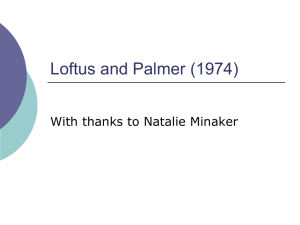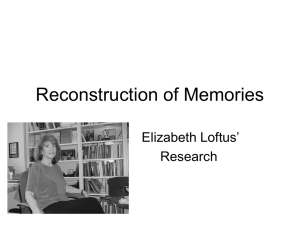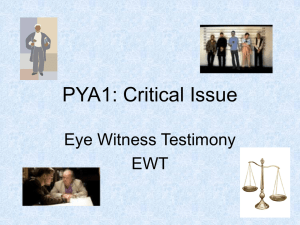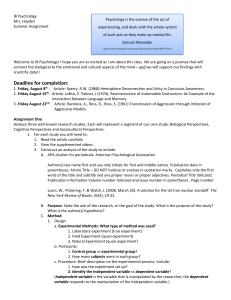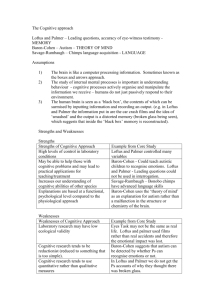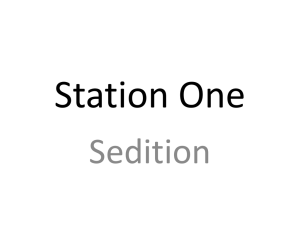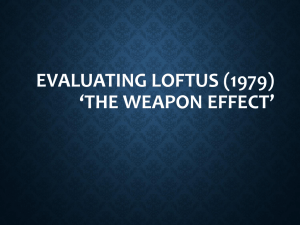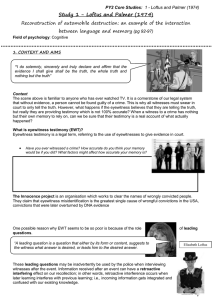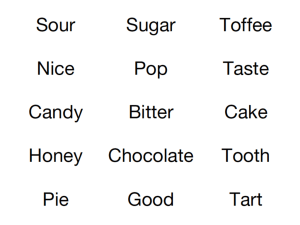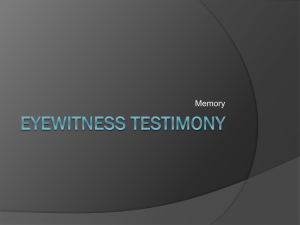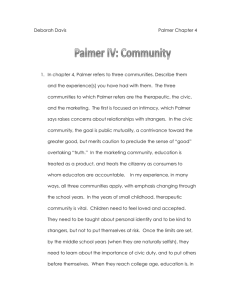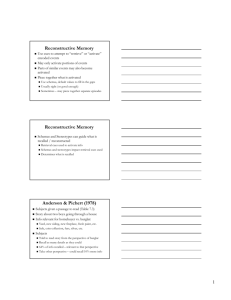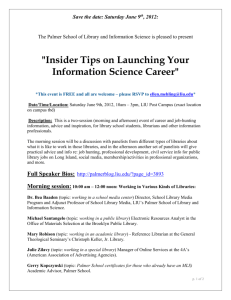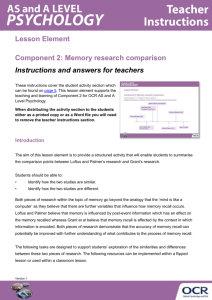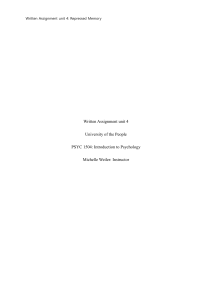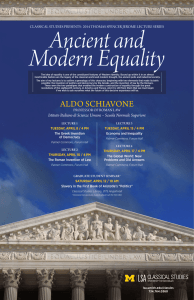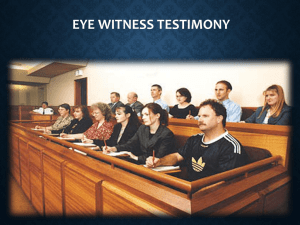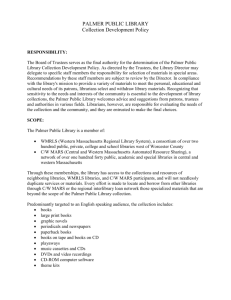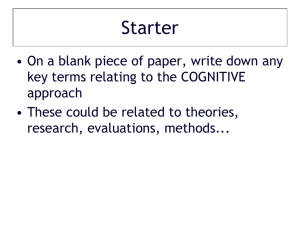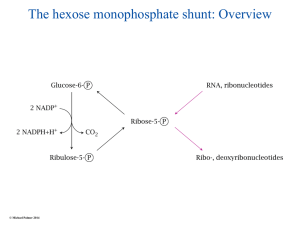Loftus and palmer Core study slides
advertisement
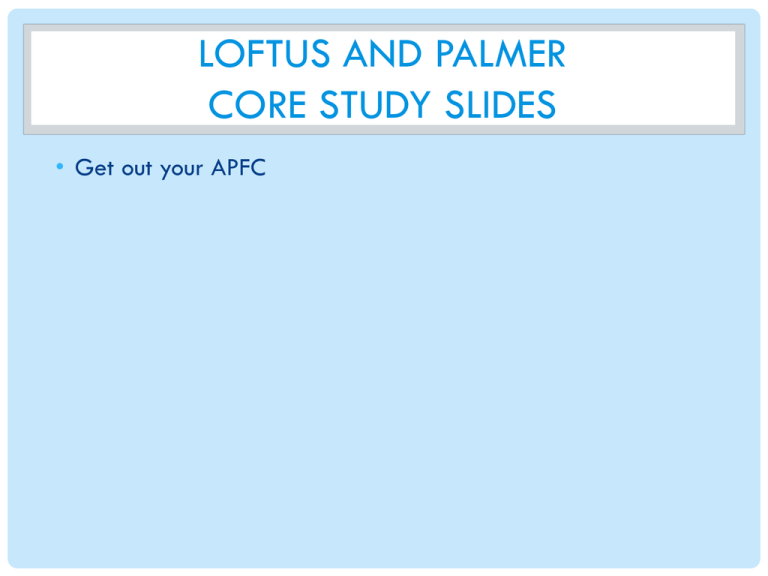
LOFTUS AND PALMER CORE STUDY SLIDES • Get out your APFC Loftus and Palmer (1974) – Reconstruction of automobile destruction: an examples of the interaction between language and memory The context: •The inaccuracy of EWT is a serious concern •Inaccurate EWT is the main factor leading to false convictions •The Innocence Project claims that misidentification played a role in more that 75% of convictions that were subsequently overturned Based on your knowledge for today, what might have led to these misidentifications? Why do you think they were overturned? What new evidence did they have? Loftus and Palmer Aims To investigate the accuracy or inaccuracy of memory. In particular, they wanted to investigate the effect of leading questions on the estimate of speed. This experiment had 2 procedures, therefore there was a specific aim for each procedure. Procedure 1: Aimed to see if the estimates given by participants about the speed of vehicles in a traffic accident would be influenced by the wording of the question asked. How might they have done this? Learning objectives: To understand the context and aims of Loftus and Palmer’s study To be able to describe the previous research leading up to Loftus and Palmer’s study Procedure 1 • 45 student participants • Shown seven film clips of different traffic accidents • Length ranged from 5-30 seconds • Afterwards participants received a questionnaire • They were also asked a series of questions How fast were the cars going when they... Hit each other? Smashed into each other? Collided with each other? Bumped into each other? • Among these questions was one critical question: • About how fast were the cars going when they_________ each other? • This is the question that was testing whether or not wording had an effect Contacted with each other? 9 participants in each condition. This experiment had 2 procedures, therefore there was a specific aim for each procedure. Procedure 2: The second procedure aimed to investigate whether or not leading questions bias a person’s response OR actually alter the memory that is stored… How might they have done this? Procedure 2 • 150 student participants Part 1: •Shown film of a multiple car crash (actual crash less than 4 seconds) •Asked a set of questions, including the critical question. How fast were the cars going when they... Hit each other? Smashed into each other? Control group – no question •Split into 3 groups Part 2: •One week later participants asked to return to the lab •Asked further questions including a critical question: •‘Did you see any broken glass?’ 50 participants in each condition. THE HOT SEAT http://www.classtools.net/random-name-picker/ 1. 2. 3. A NAME WILL BE PICKED USING THE RANDOM NAME G E N E R ATO R . T H AT S T U D E N T W I L L T H E N A N S W E R Q U E S T I O N S O N T H E L O F T U S A N D PA L M E R F R O M T H E C L A S S . THE PUPIL HAS 1 LIFE AND ONE LIFELINE (LIFELINES ALLOW YO U TO A S K T H E I R C L A S S M AT E S F O R A C LU E ) EXAM FOCUS Complete the following questions: 1. Identify two experimental groups in Experiment 2. (2) 2. Outline one difference between the responses given by the two experimental groups in Experiment 2. (2) 3. Describe the sample in the first experiment. (2)
